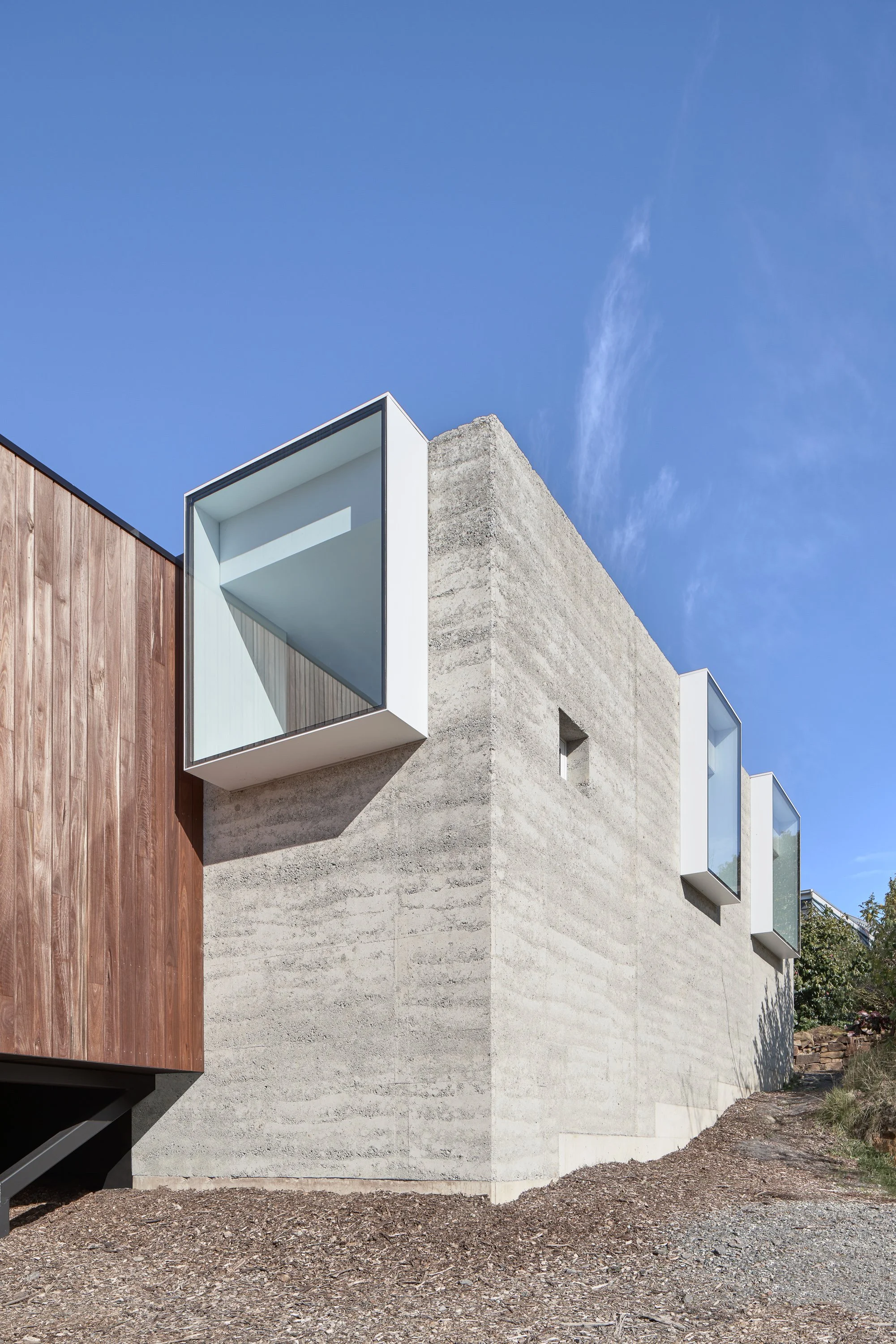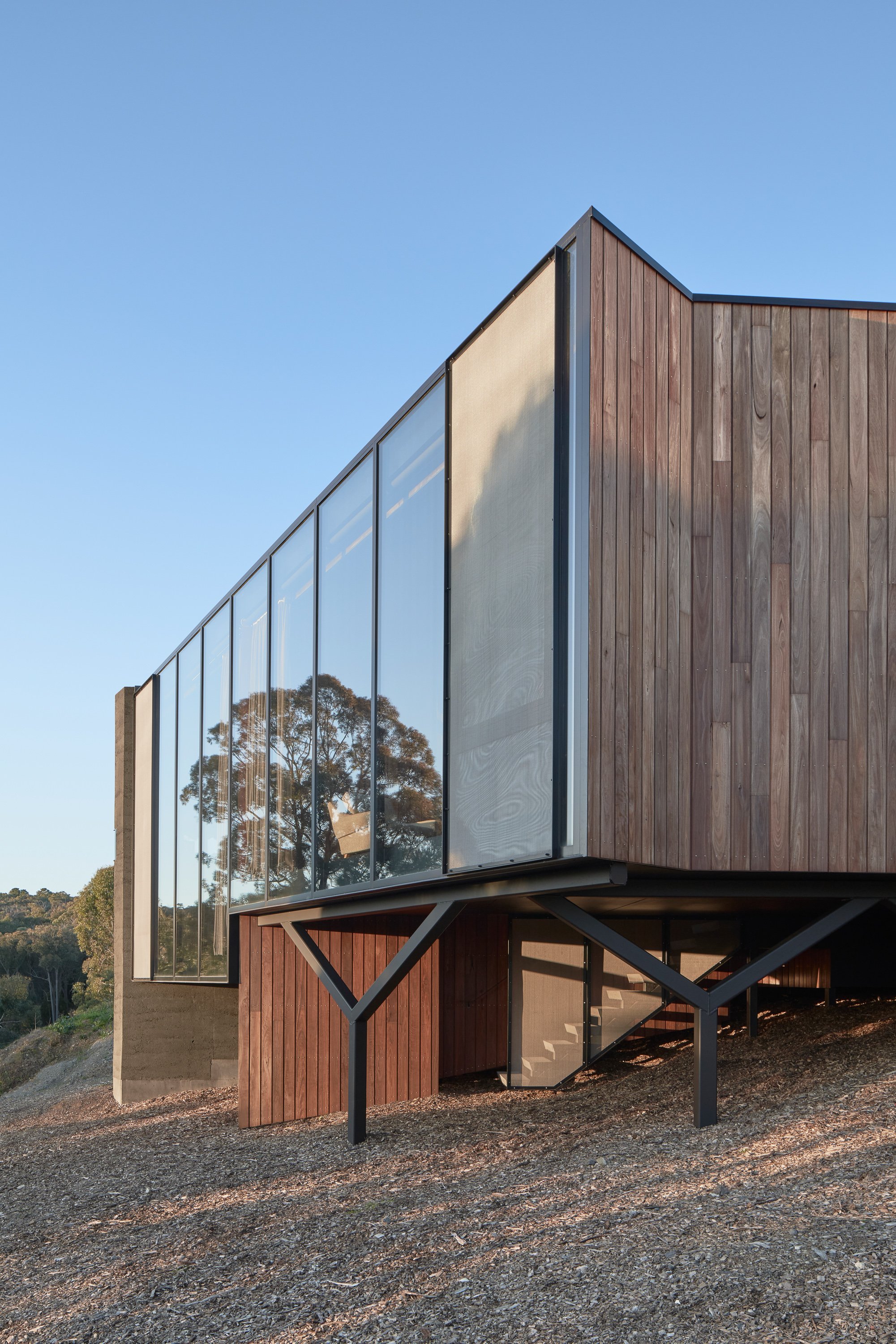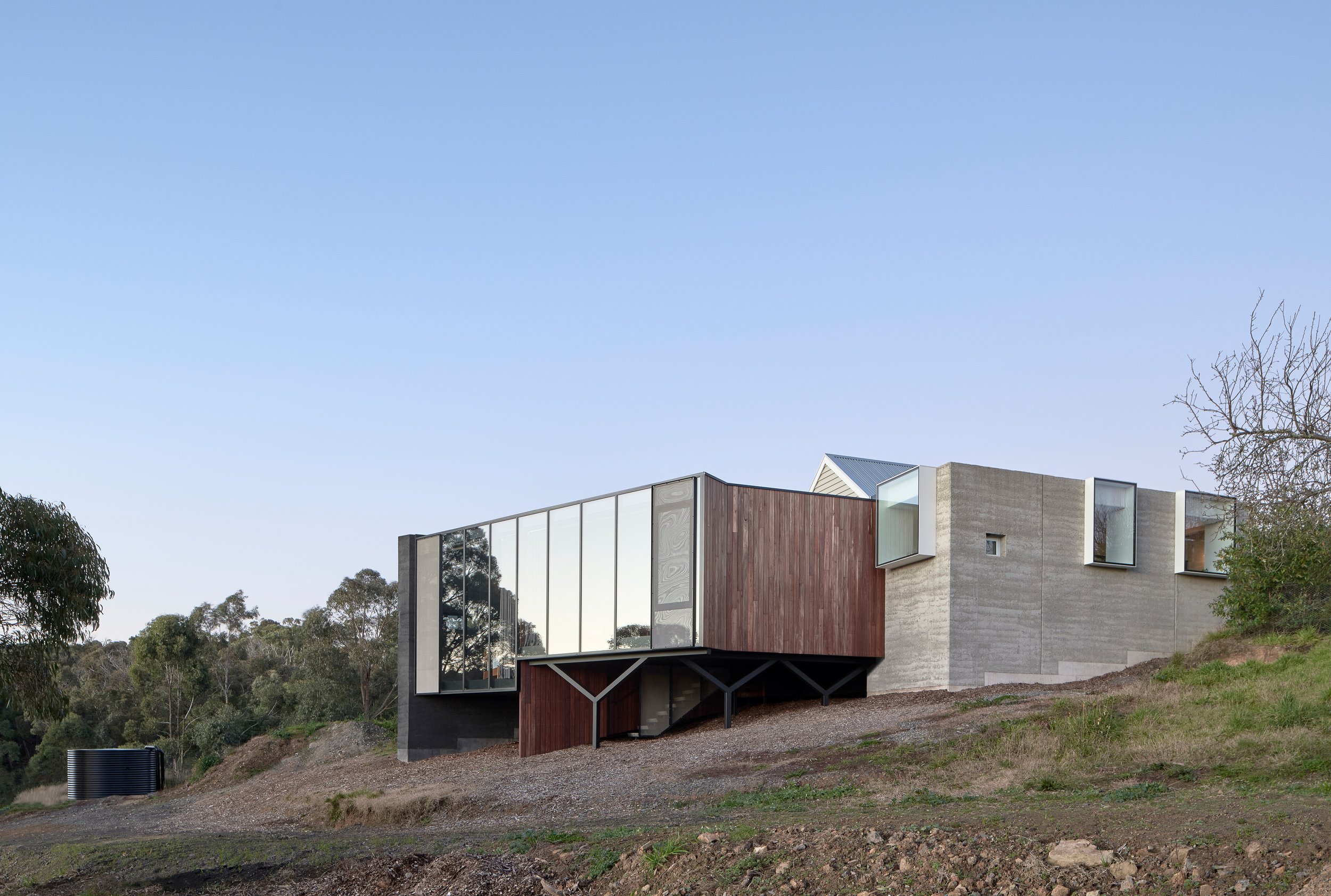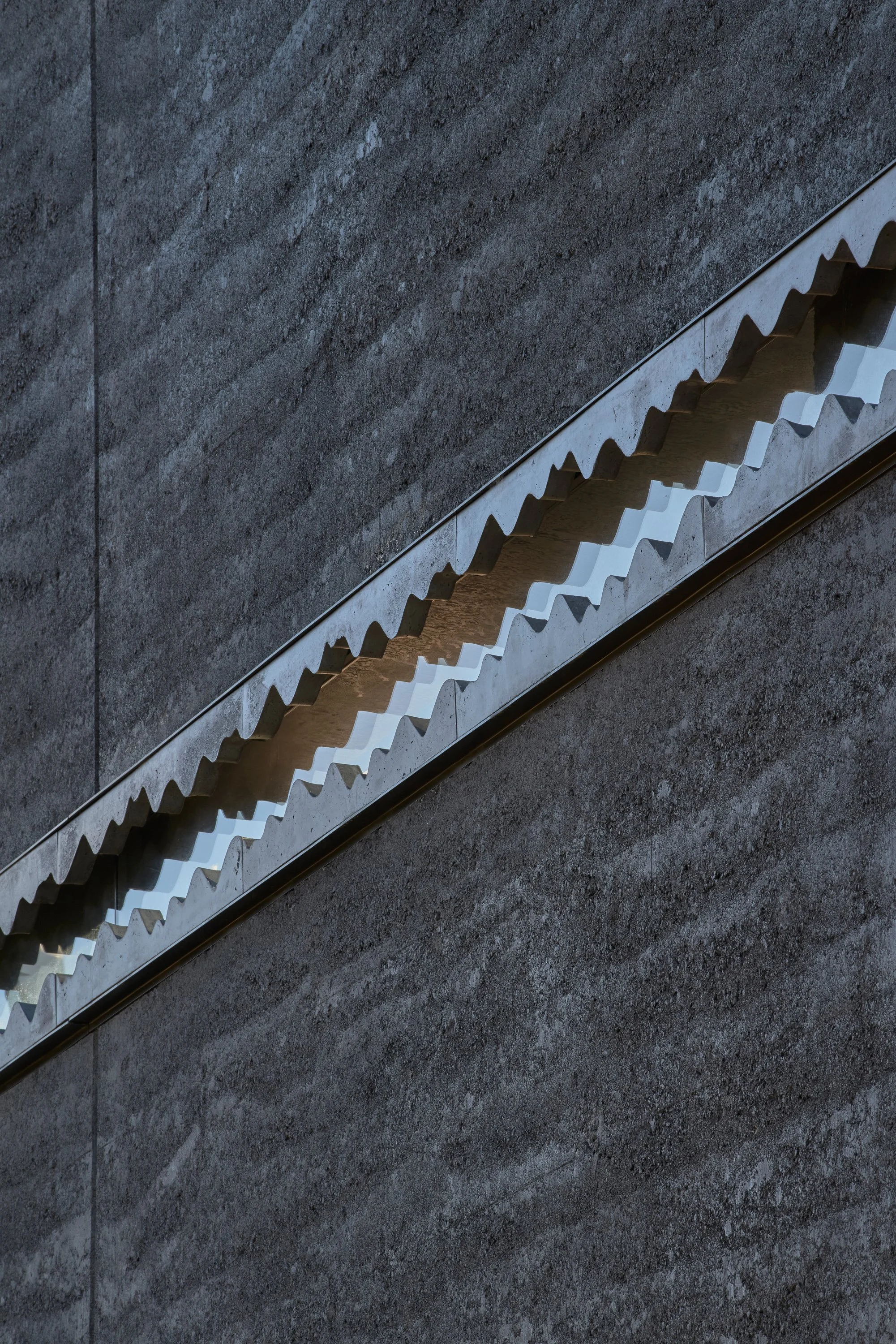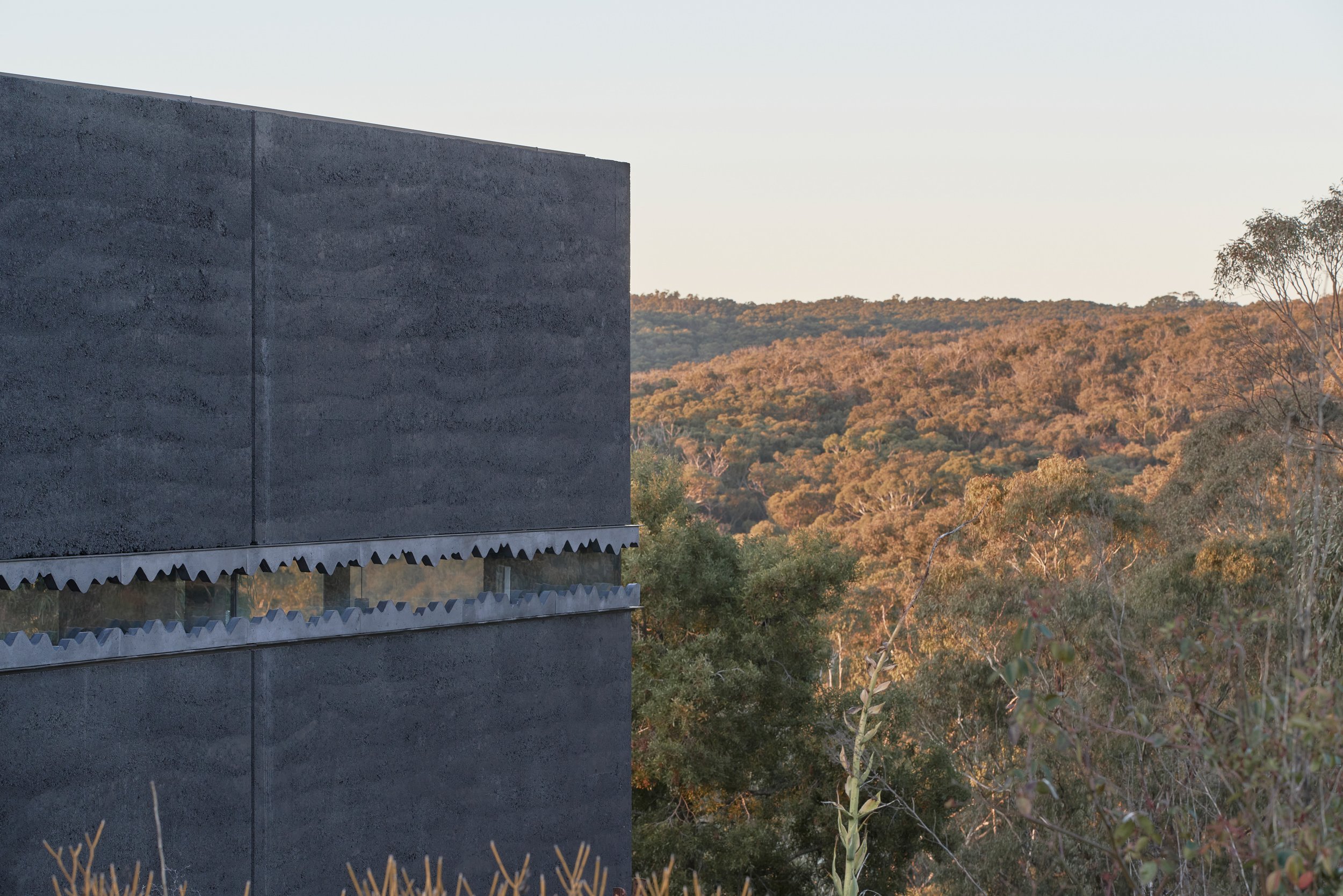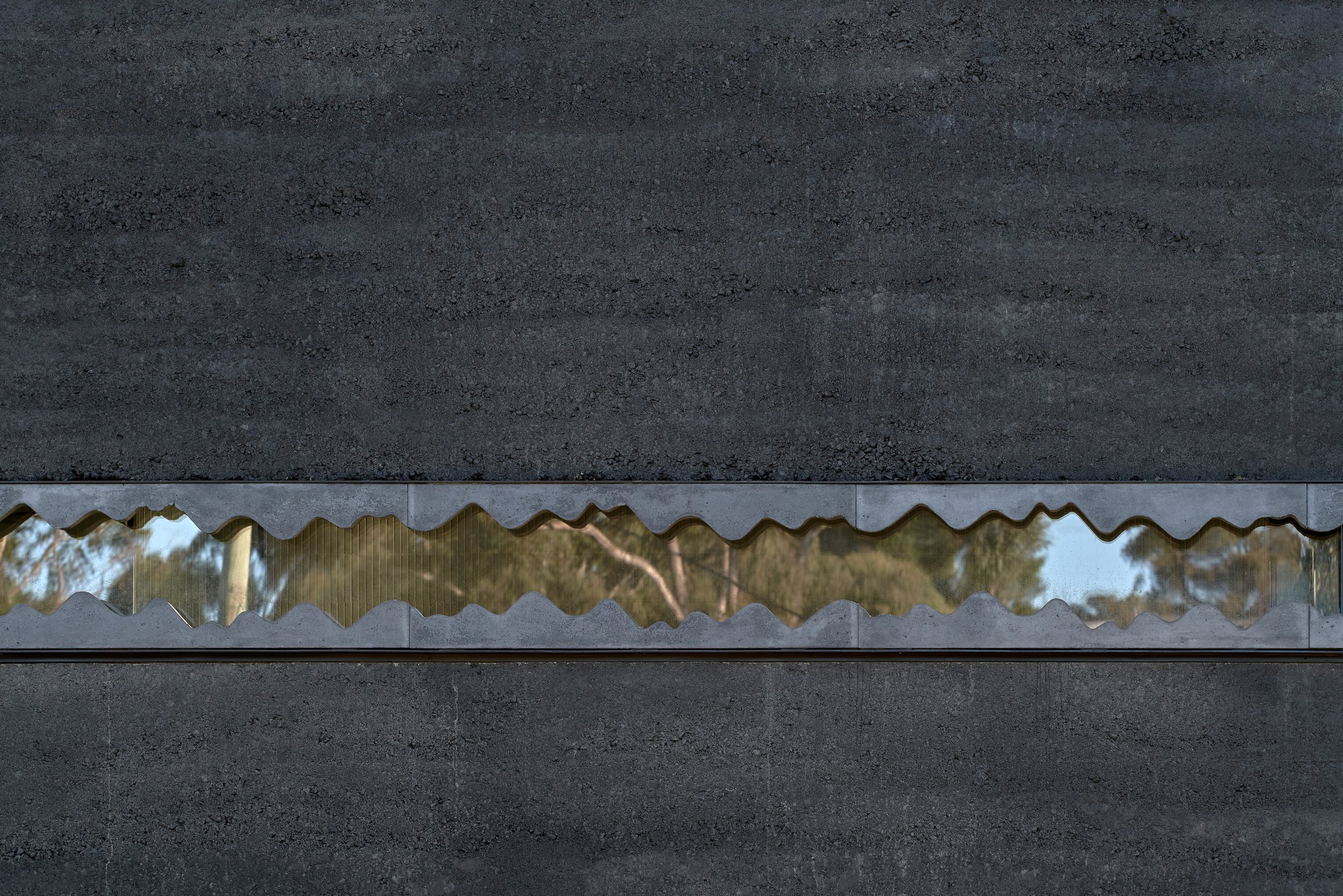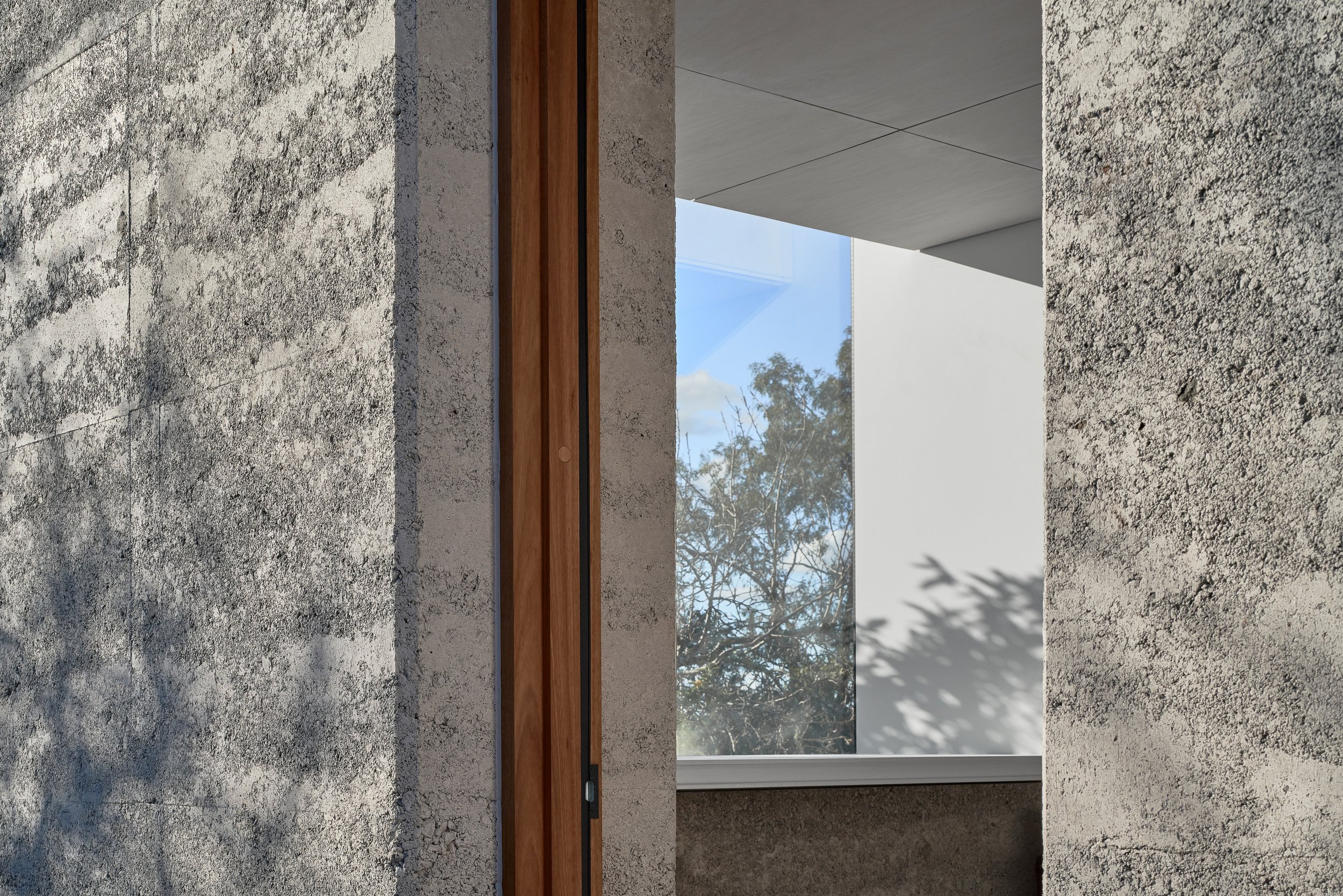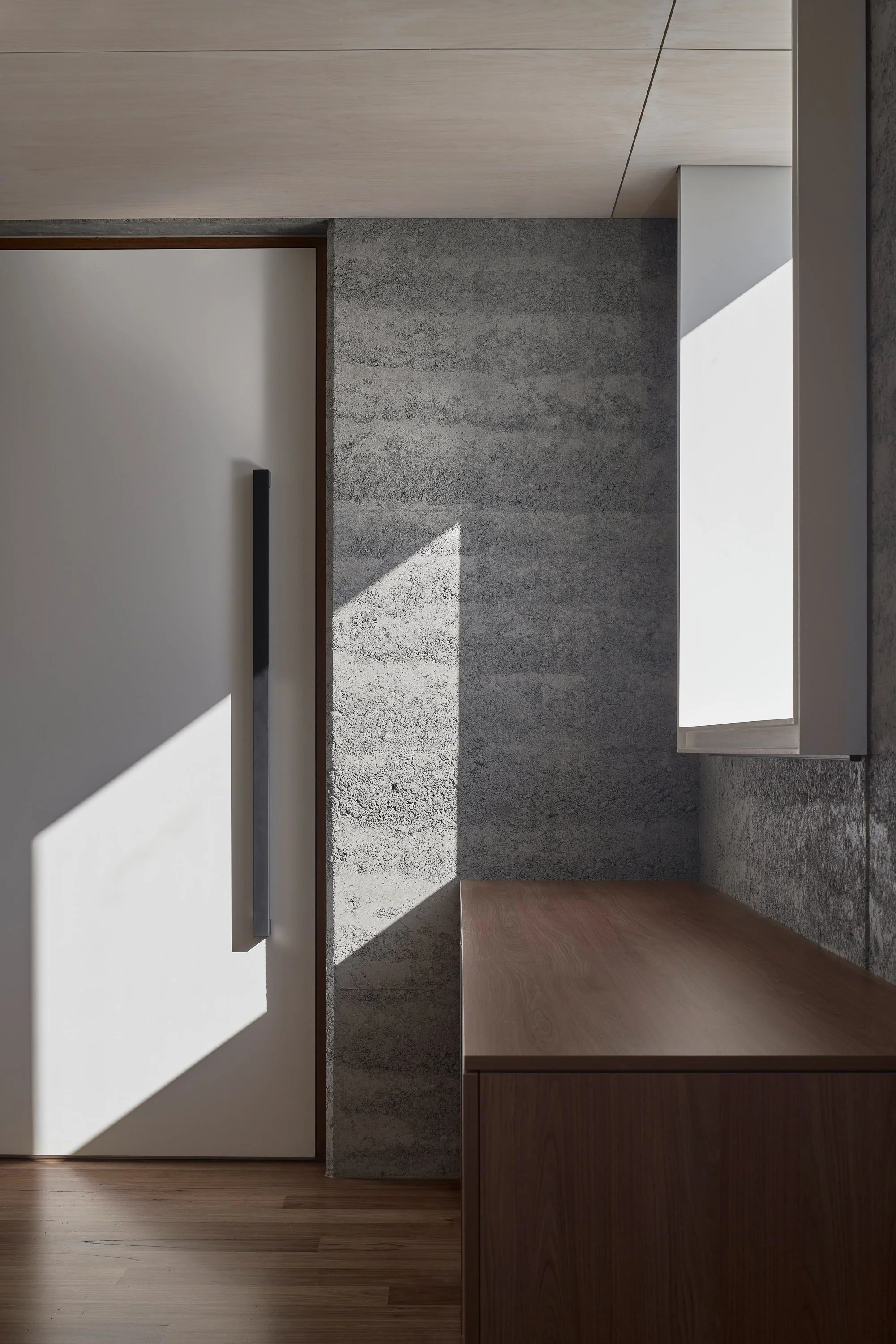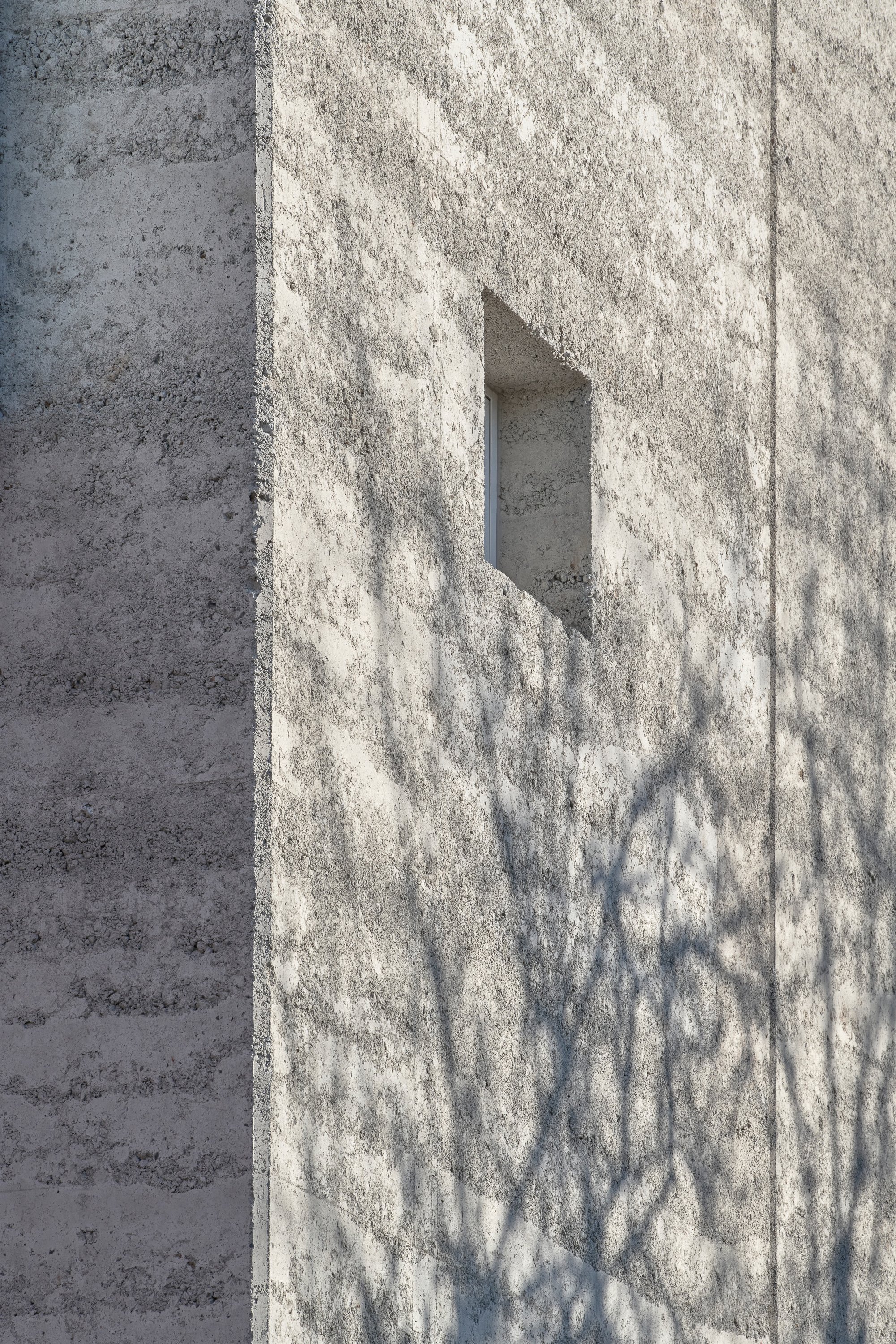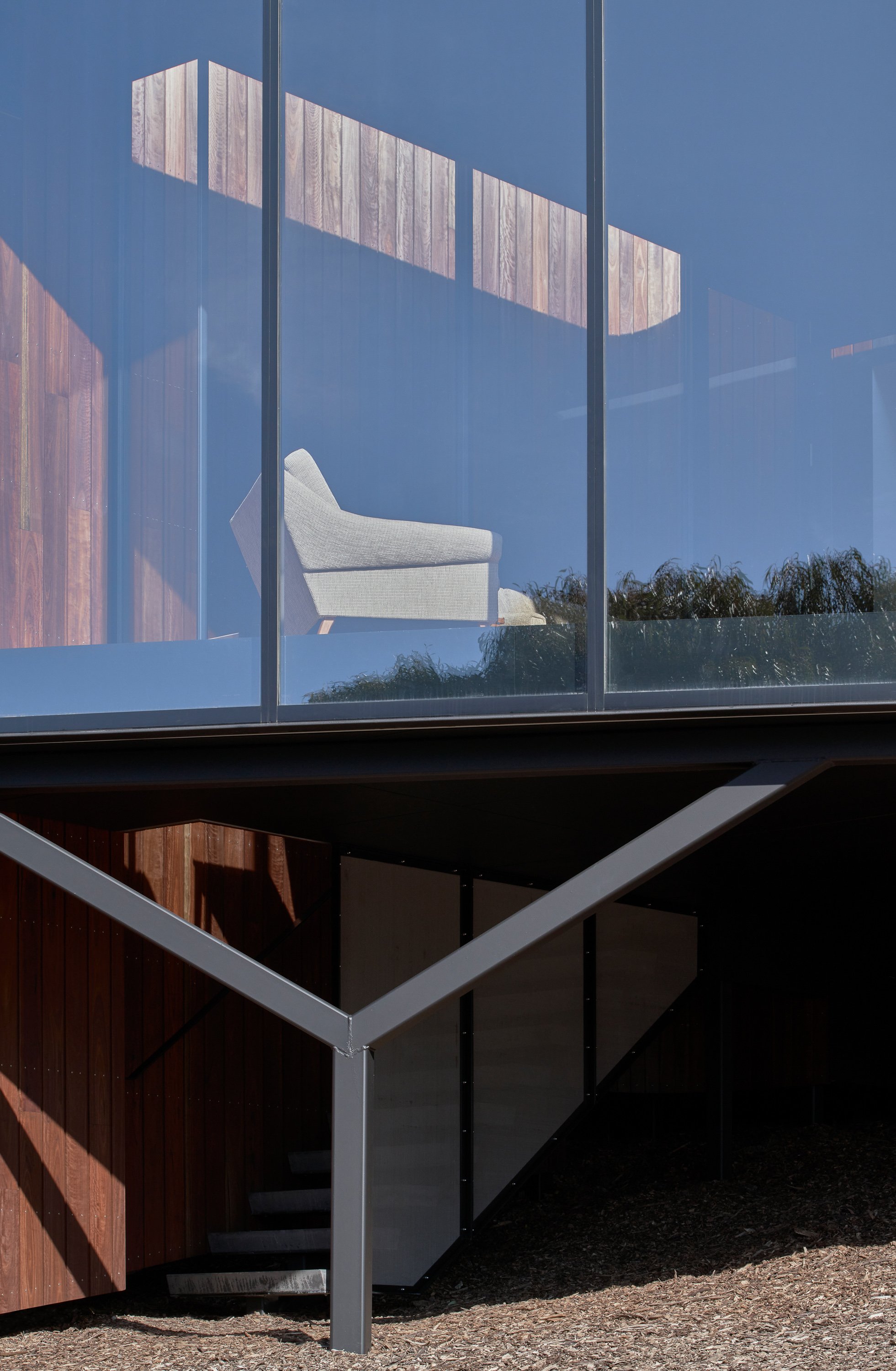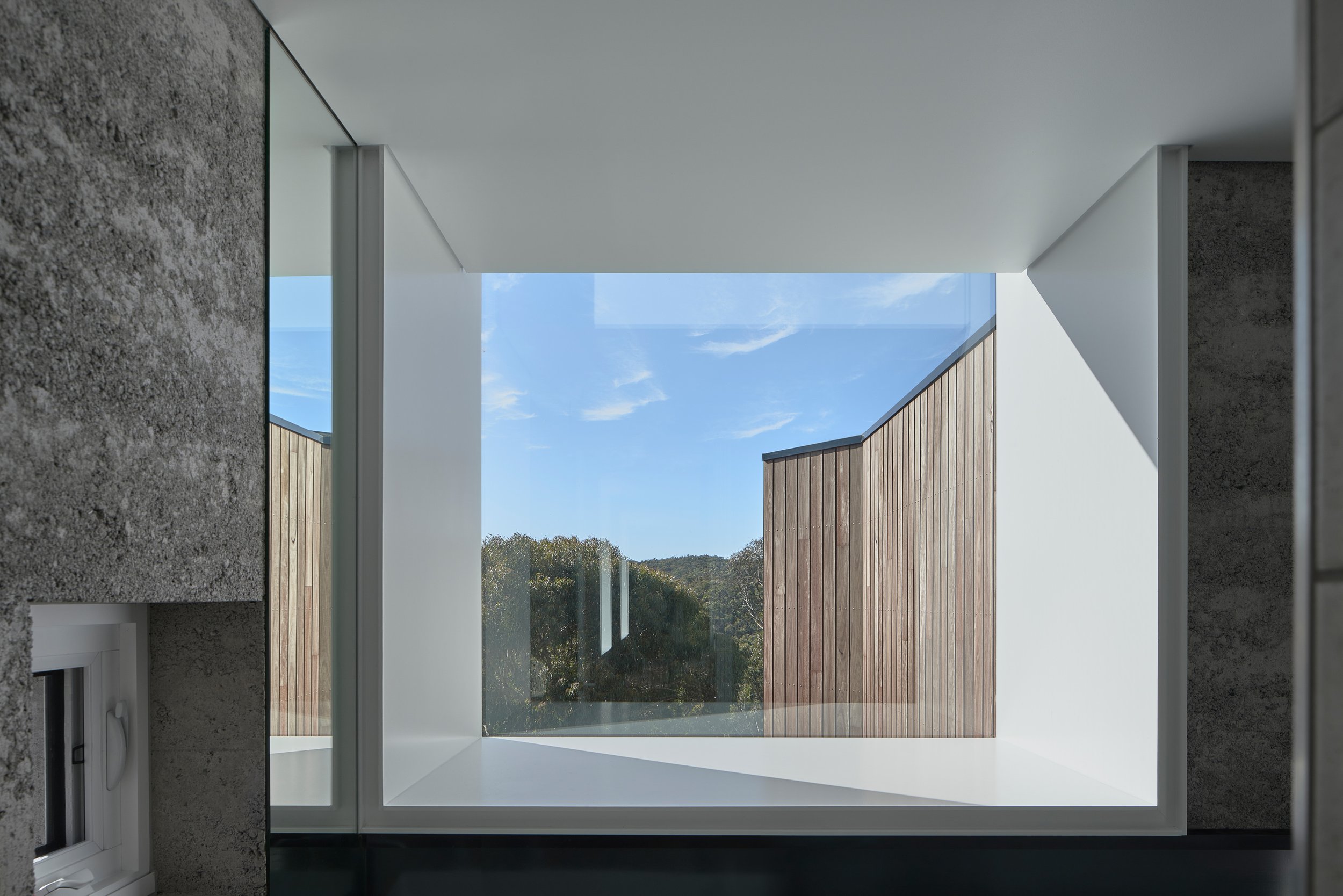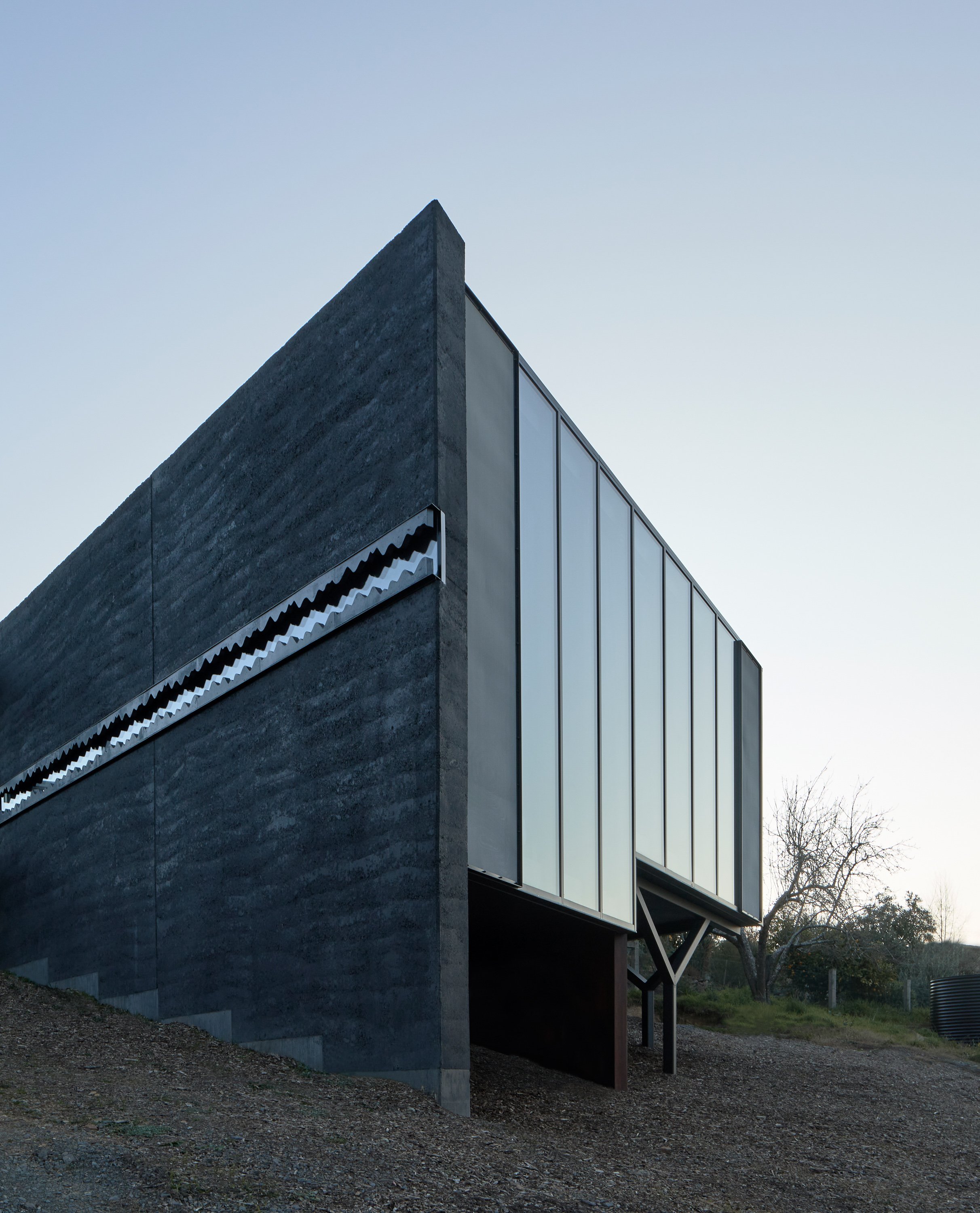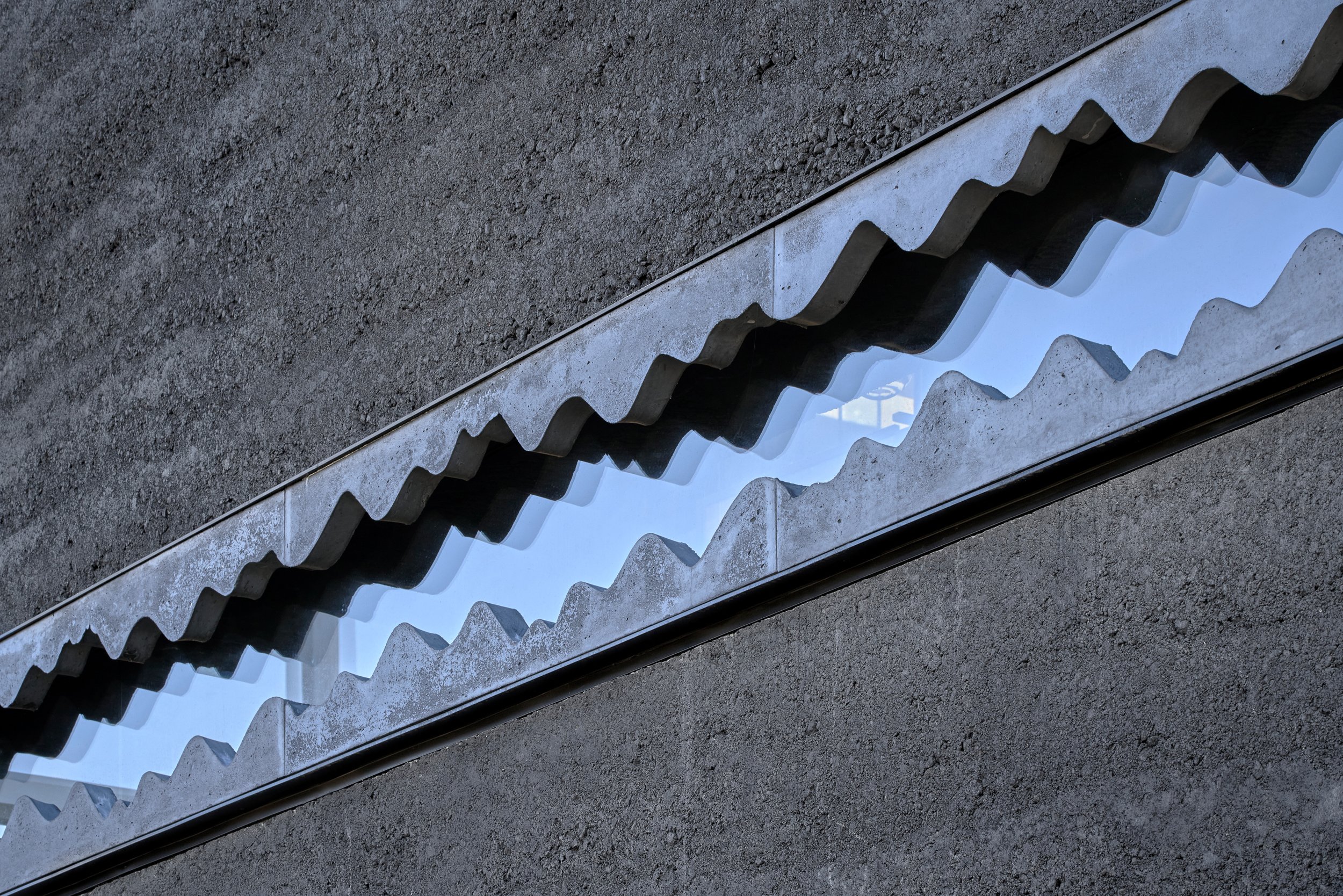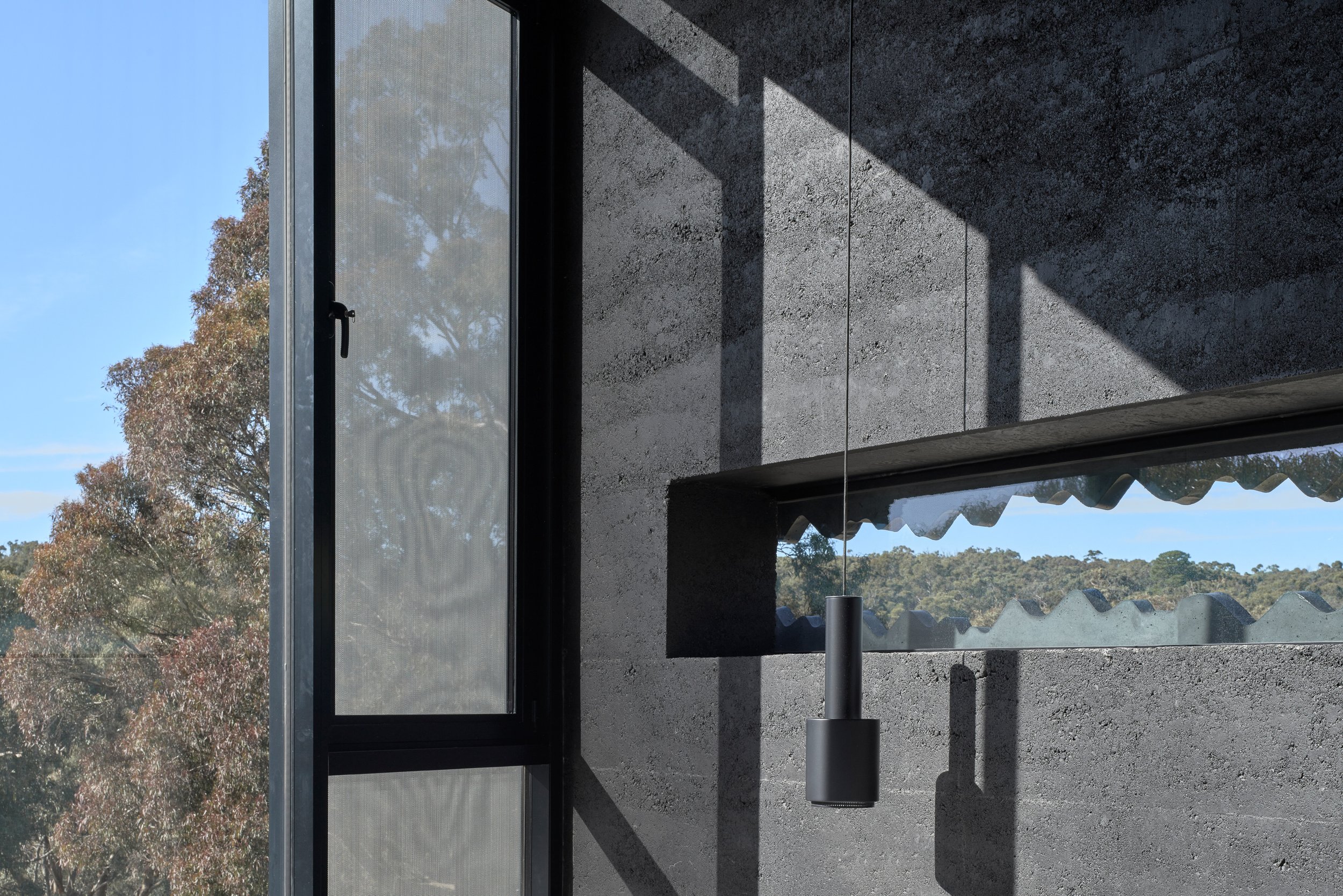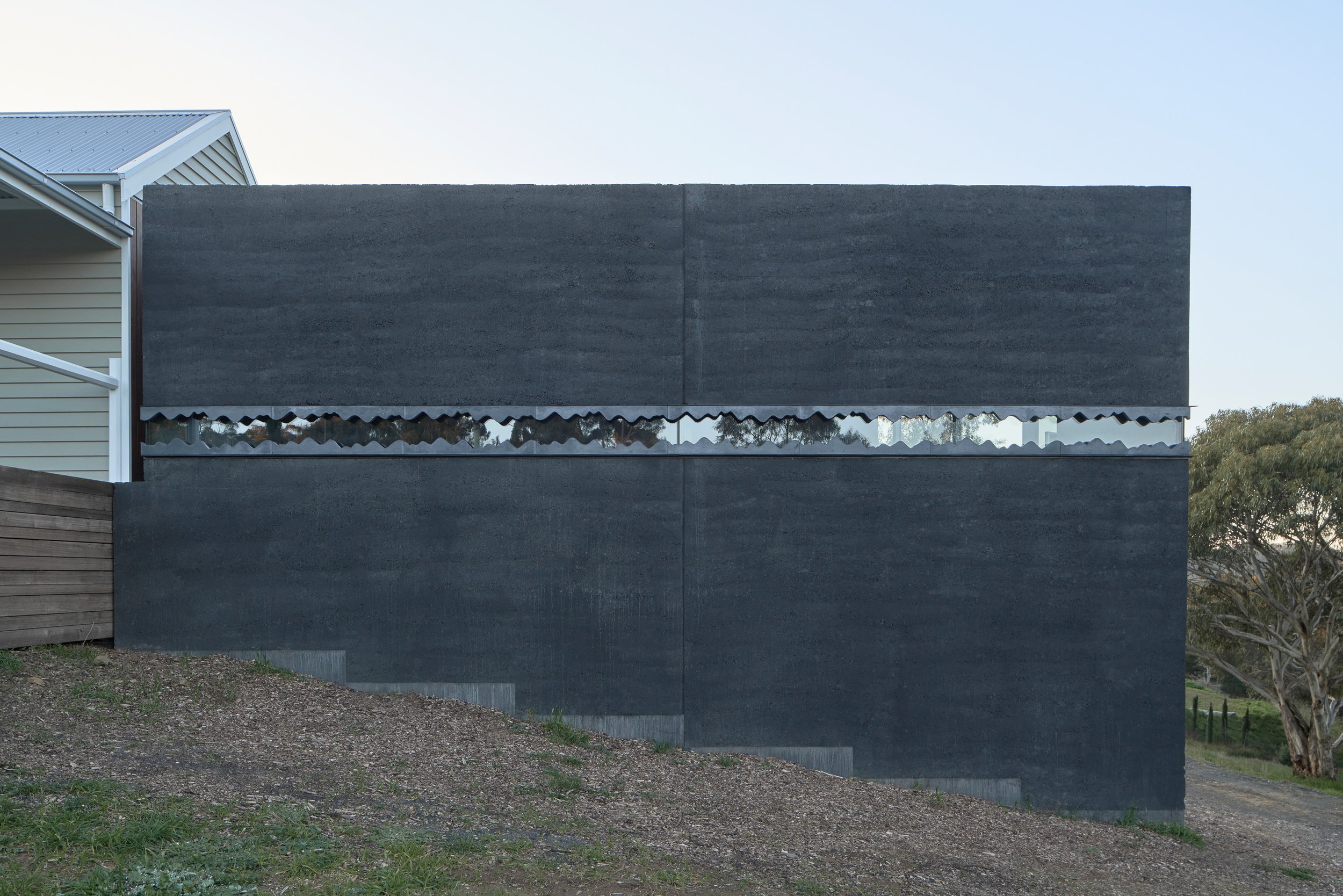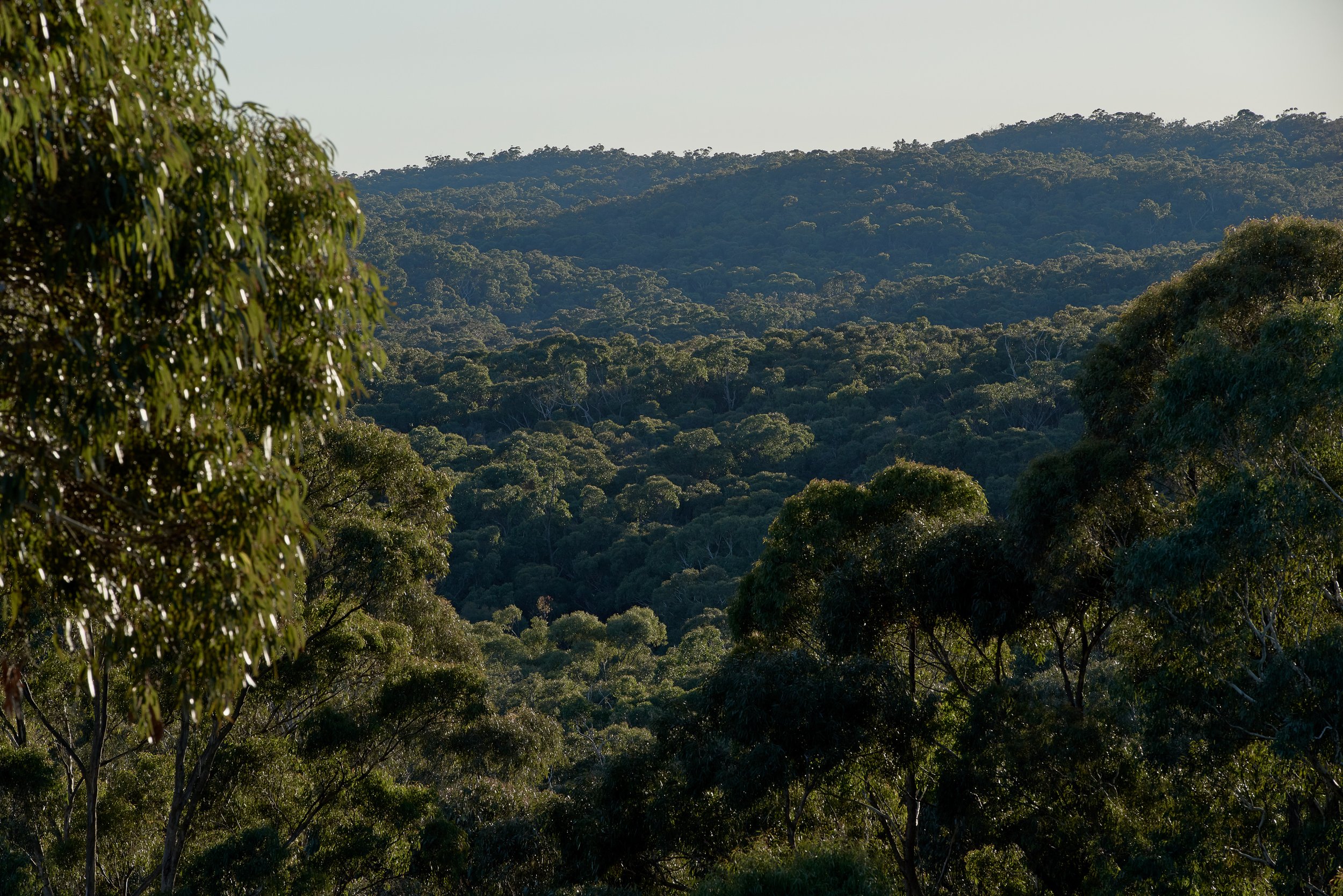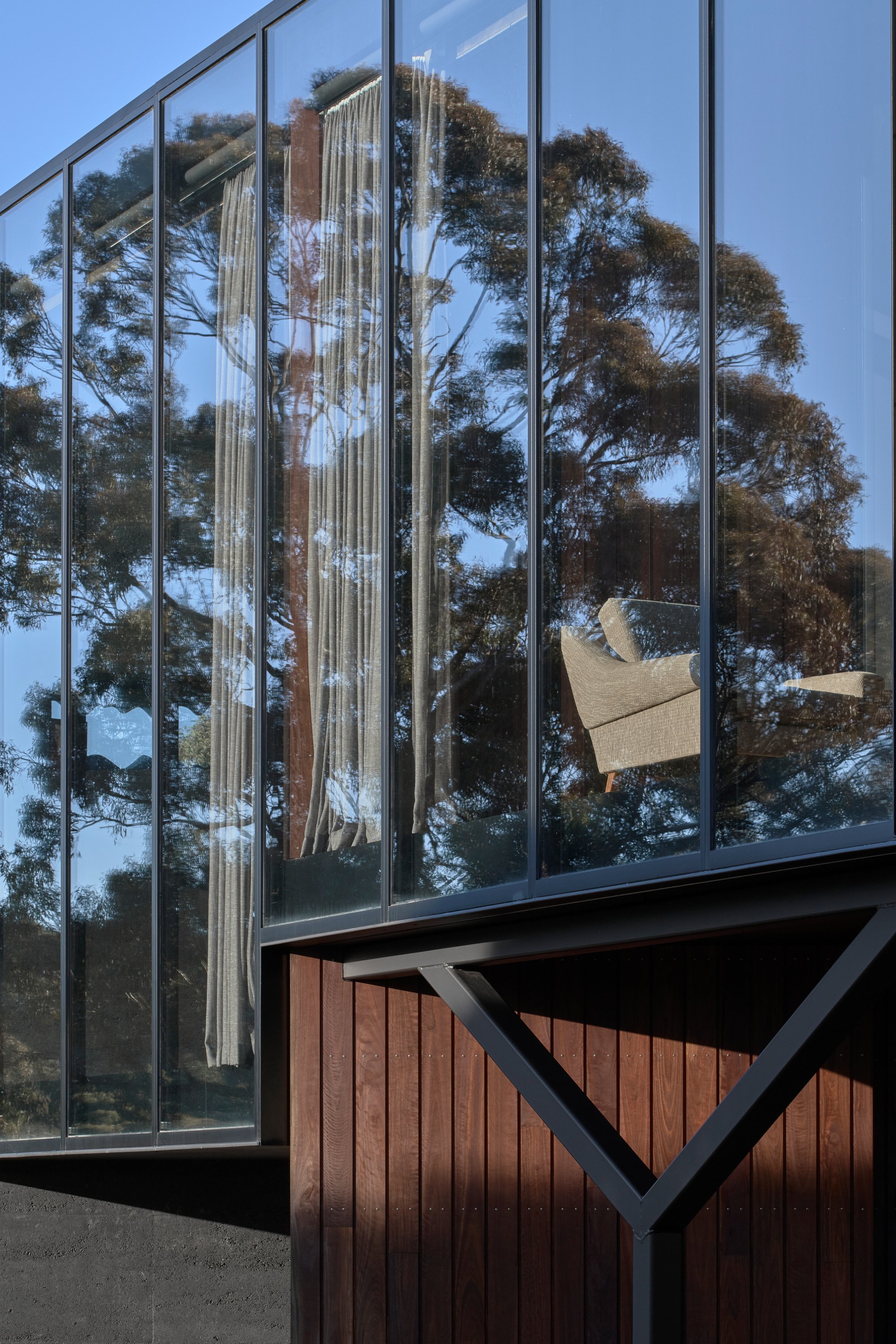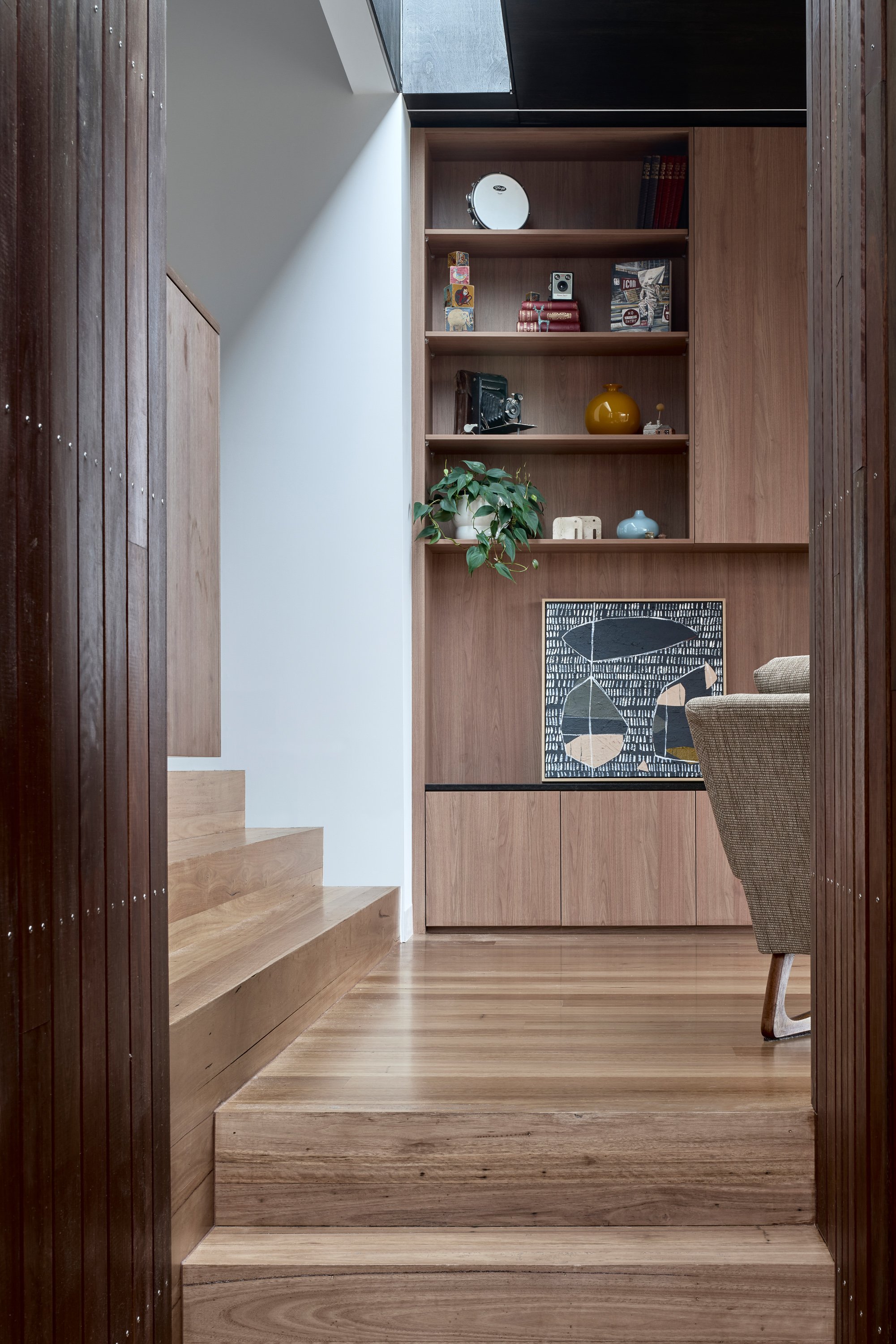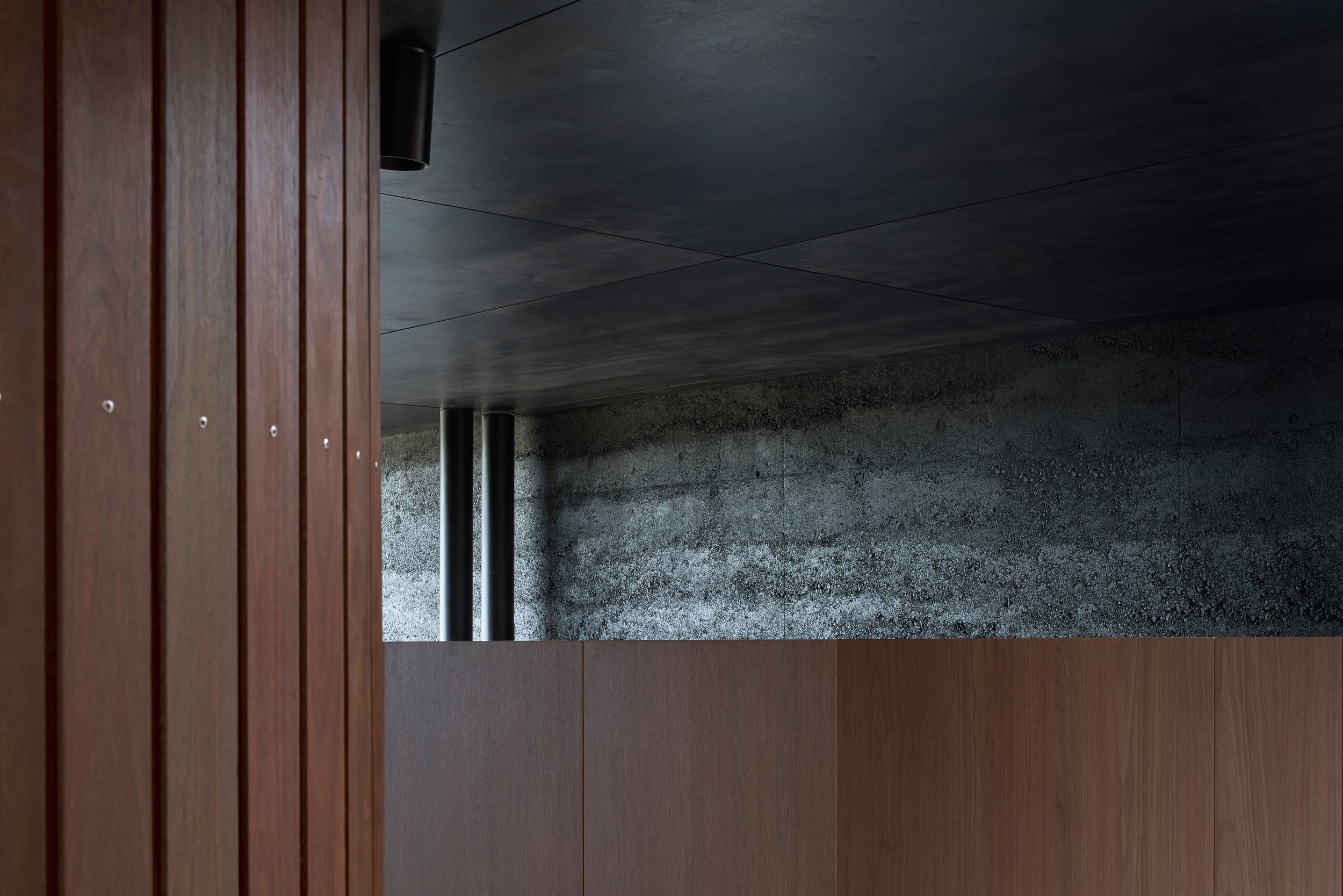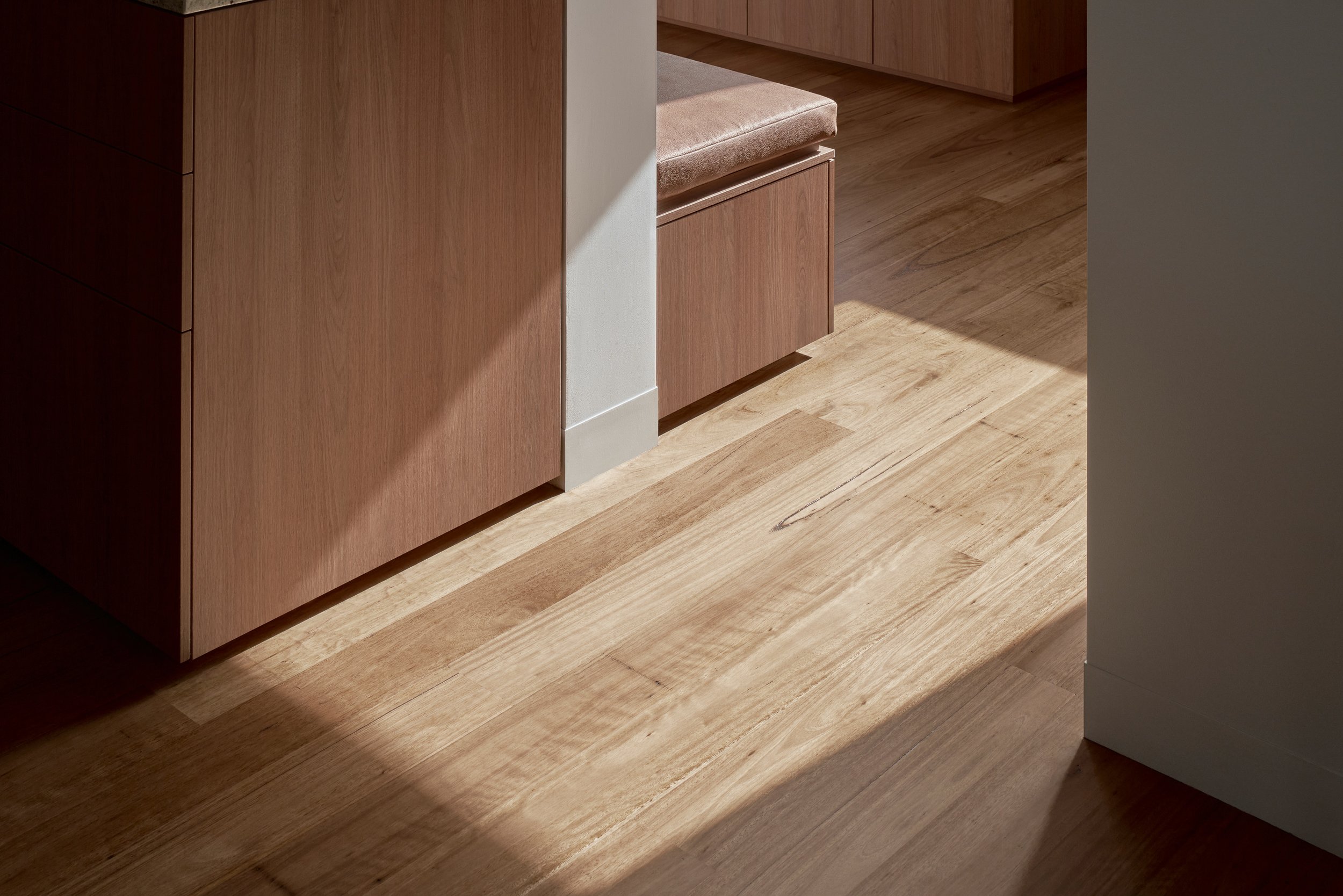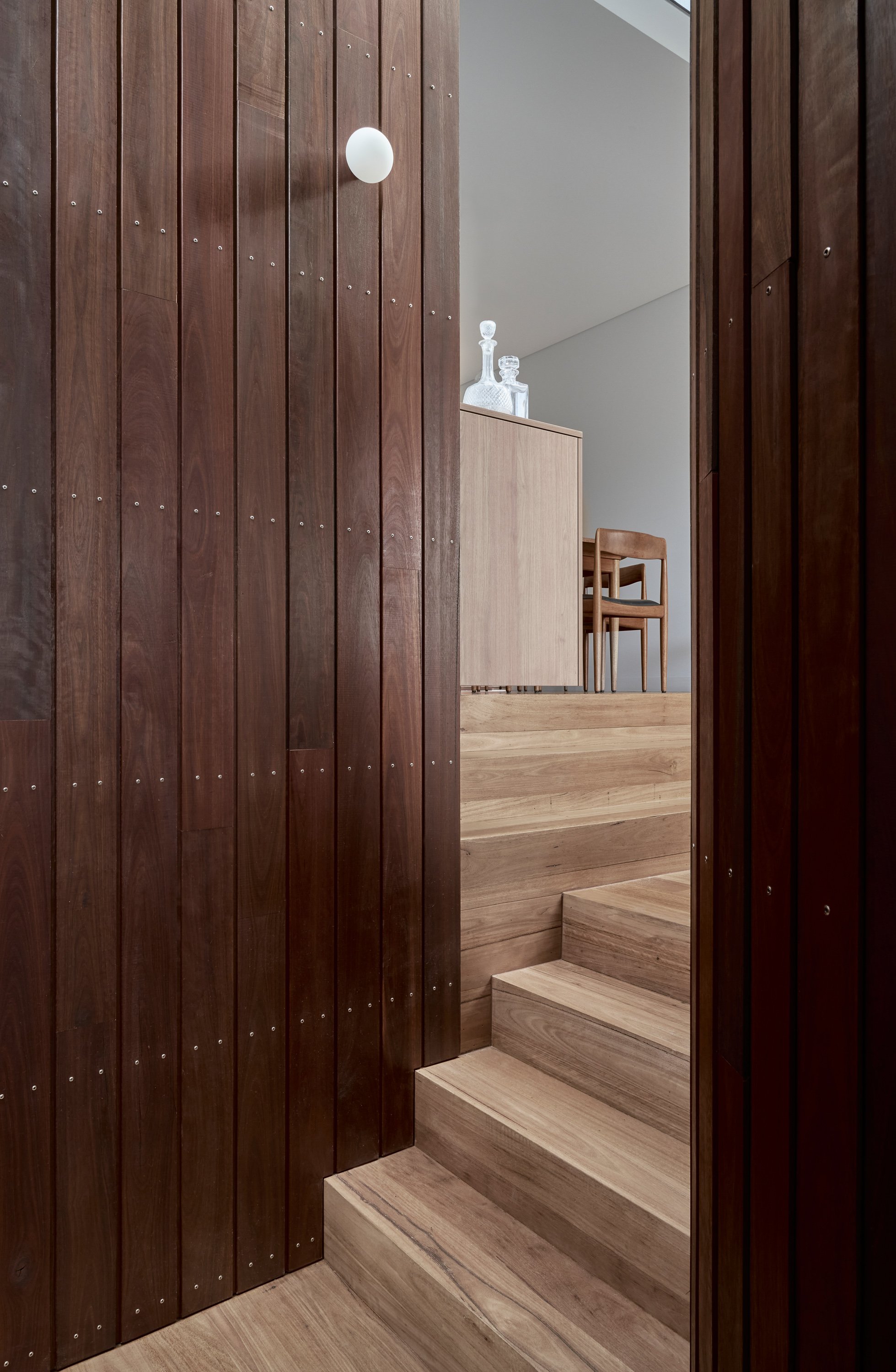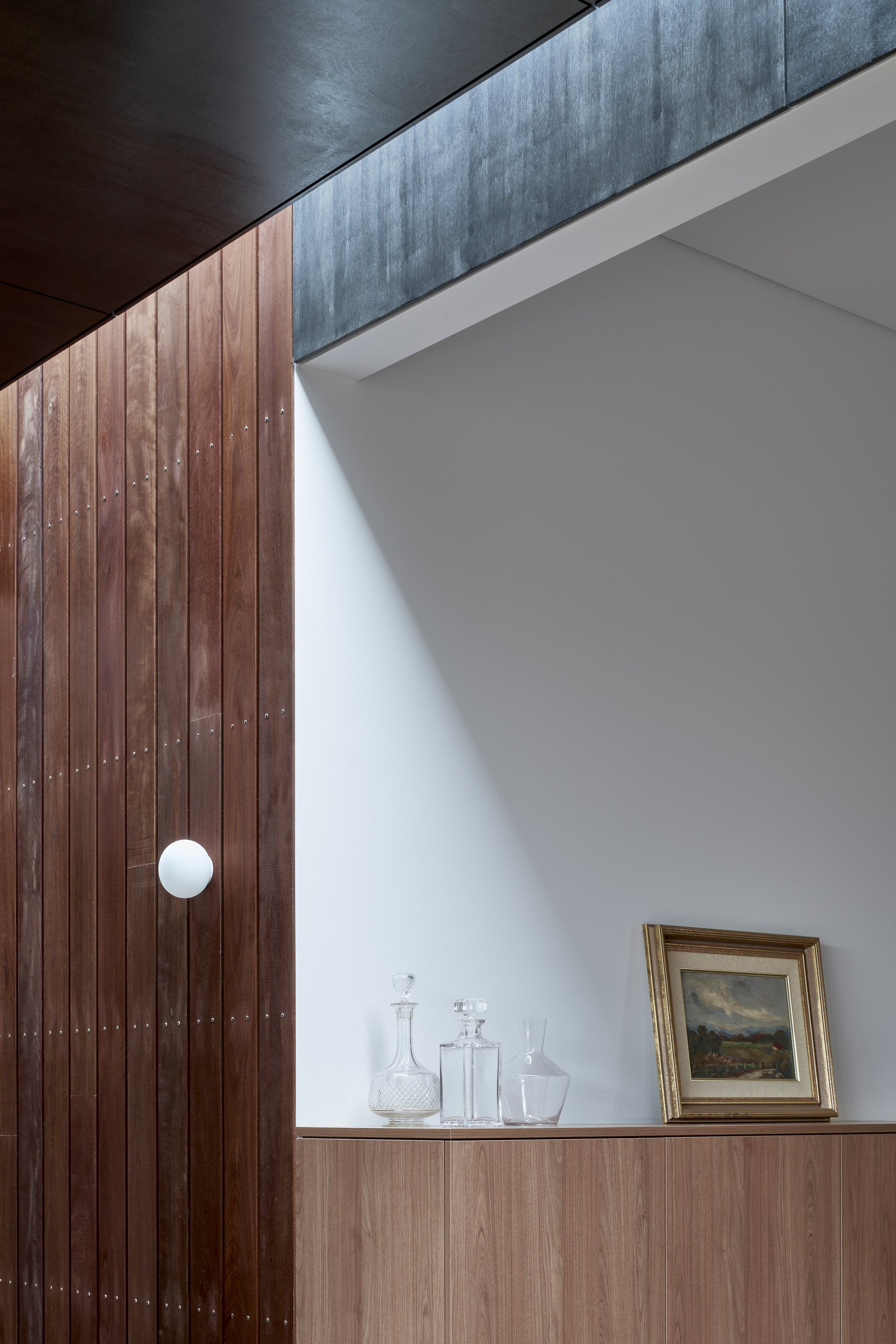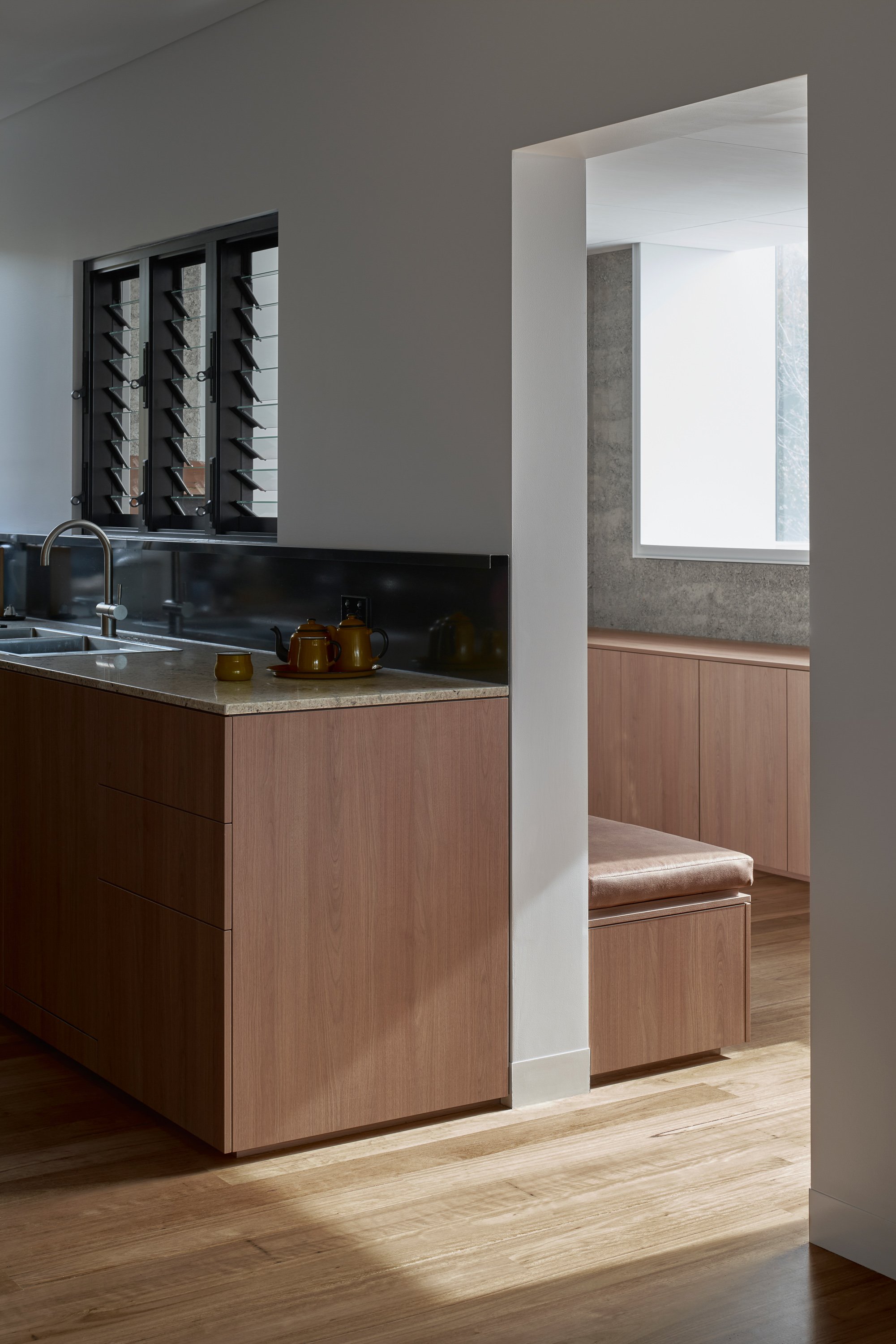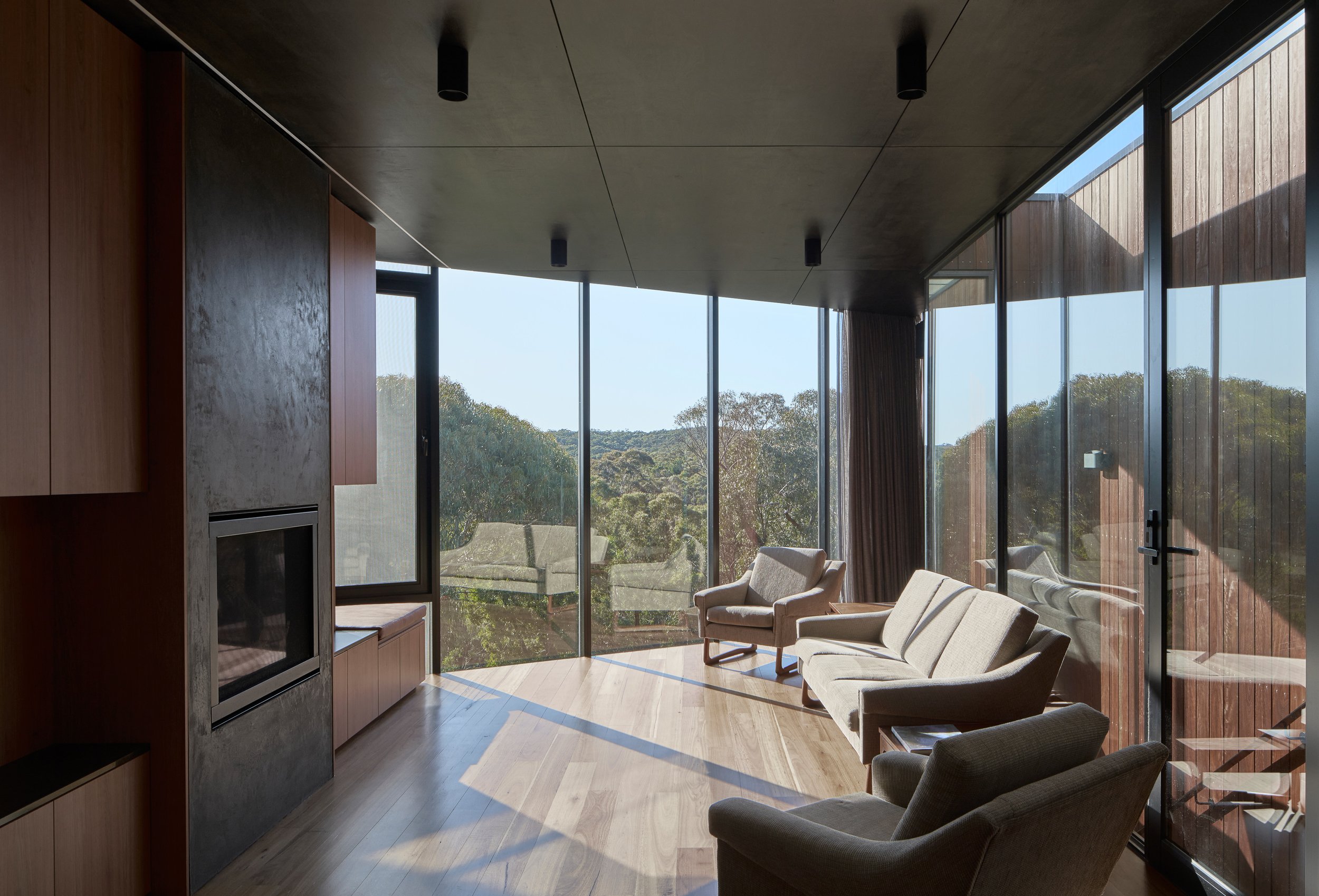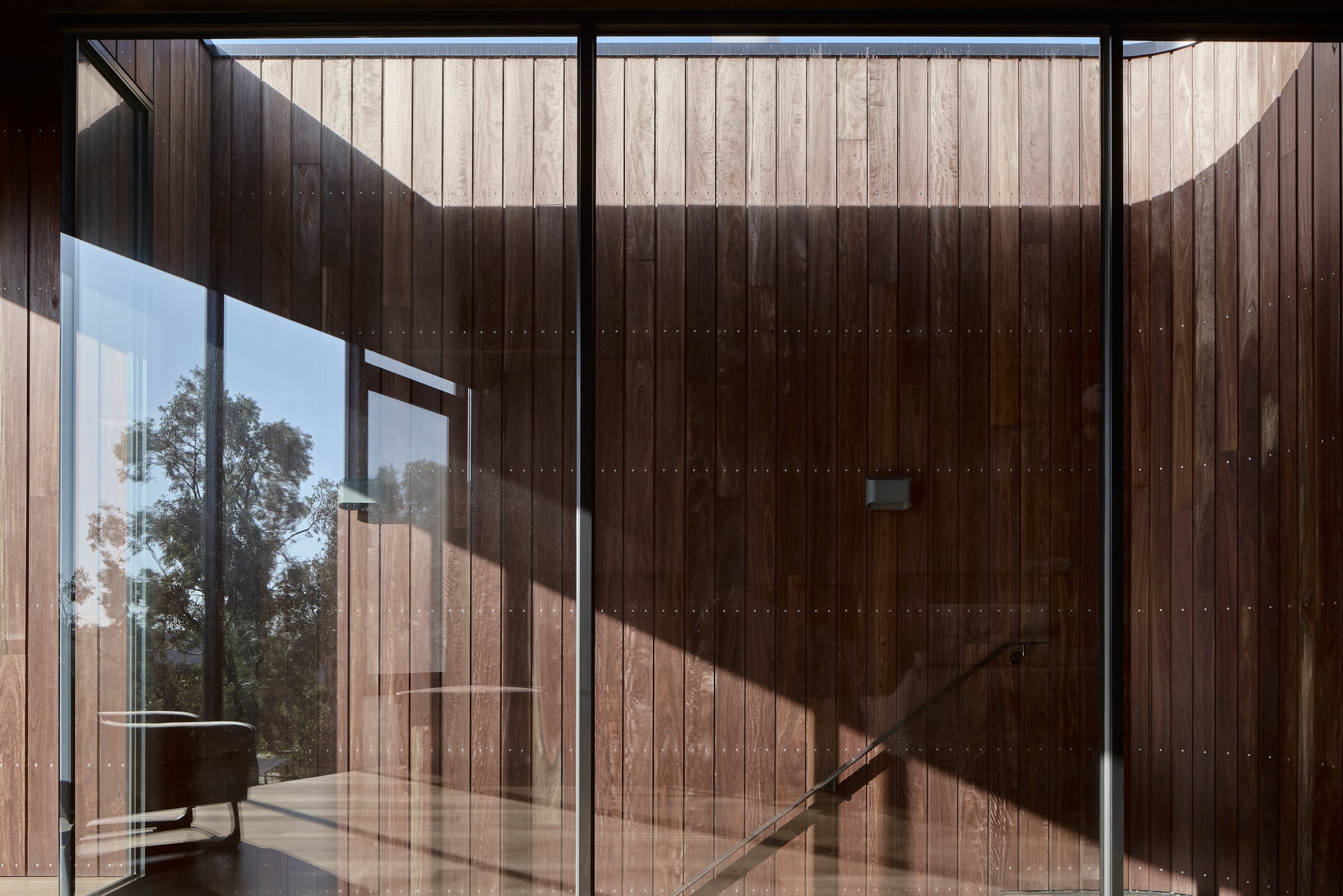HOUSE WITH EARTHEN WALLS
_
Extension to an existing residence from 1911
Completed 2022
Location: Hepburn Springs, Victoria, Australia
Photography: Peter Clarke
House with Earthen Walls is an alteration & addition project to a historically significant existing double-pitched, weatherboard cottage from 1911.
The house is located on the periphery of the Hepburn mineral springs bushland reserve, south of Hepburn Springs township and its site is sloping from its western boundary down to its eastern boundary, fairly secluded from the main road with spectacular views from the south-east all the way across to the north-north west of the site, it offered great potential for maximising the existing amenity.
Our clients came to us in August 2017 after purchasing the property which had been with the previous owners family since the house’s erection in 1911. The house had been the stage for multiple generations of family memories and become known in the area for socialite and larger-than life character Nora Ramsey better known to the locals as ‘Auntie T’ who had lived in the house for 75 years. Nora’s Granddaughter - Valda describes the house as “A very special place full of precious memories - where as a child we enjoyed watching the grown ups dancing under the verandah on a summer evening” . Nora was known for having a good chat over a cup of tea. Friends used to come up the side of the house to the small window in the kitchen which became a somewhat social confessional and a place for a good local yarn.
In 2017 the house was in pretty bad shape and needed more than a bit of love. Our clients were adamant about retaining the integrity of the existing house given its history and importance to the local community. Therefore the existing weatherboard cottage was to be restored and celebrated with the existing floor plan remaining largely original.
The brief from our clients was for a new extension containing living area, master bedroom and ensuite in addition to removing an existing lean-to erected in the 1980’s and replacing it with a similar programmatically loaded but contemporary addition of a bathroom and mud-room area.
There were a couple of areas in which the house provided clues to draw out its full potential. These being small windows in the existing bathroom and living areas which framed small views of the surrounding hills and mountain ranges. These were used as primary formal drivers which resulted in the configuration of the project.
The existing kitchen was retained and celebrated as a the ‘heart of the house’ with the new extension being a literal extrusion of the kitchen pulled out towards the north-east and opened up with a glass end towards the view. This new Living area volume is then cut to maximise the view towards the bushland reserve and beyond. Clad in vertical spotted gum timber boards - both externally and internally - the materiality of the space enhances the relationship with the surrounding heavy eucalyptus vegetated context.
A black stained timber ceiling further enhances this relationship through the dialling up of contrast from interior to exterior - bringing the landscape into the house.
A series of 7 steps in total provide a physical reminder of the transition between old and new but also provides an embedded physiological relationship to the sites sectional condition as its falls away down the site. One begins to understand the site as a large whole though descending down the steps within the house which reveals an incredible framed view of the mountains beyond.
The master bedroom and ensuite volume are again situated down a further number of steps which creates an enriched relationship with the landscape. Still hovering but physically closer to the earth, creating a sense of the residual and retreat for sleeping. Purposeful darkening of the internal materiality provides an elevated sense of retreat and enhances a deeper connection with the landscape.
A glass link provides a thin and visible demarcation between the existing and the new both in the form of a skylight and, punctuation in the heavy black rammed earth facade along the street elevation to the south.
A central staircase between the two volumes provides a practical and direct access to the landscape but importantly creates a stronger continuity with the landscape through the use of deeply penetrating light, void, reflection and materiality. At certain times of the day - one gets a framed end view of the landscape and then other times the landscape is reflected on the glass wall to the stair void which provide another perspective and seemingly brings a large nearby gum tree visually into the house on the glass. Lina Bo Bardi’s Casa Di Vidro [Glass House] of 1951, and in particular the section of that house played an integral role in the configuration of this stair and the house’s connection to its site.
Parapet levels are continued from the existing over to the addition, and the length of the new addition is exactly that of the existing house. A solid black oxide rammed earth wall creates a visual backdrop to emphasise the richness of the landscape beyond and practically - creates privacy from the street.
‘Blackness’ in materiality is used to provide and enhance the relationship with the vivid greens within the hills and trees beyond.
A thin slot window inspired by the local bushland horizon, breaks up the elevation to the street and also offers a direct visual relationship to the surrounding context. There was also a purposeful design consideration as to not to overpower the existing cottage. The new elevation is balanced to contrast but act respectfully to the old. The old is about itself and the new is about its landscape.
The lowered living area is structurally supported up by a series of Y shaped columns - referencing the existing double gable pitched roof and [chimneys which were previously demolished prior to the project]. This was a subtle way of continuing a memory of the design language of the existing house through to the next generation. Stories of the past are not lost and keep revealing themselves through conversation.
To the north of the original cottage, the former 1980’s cement sheet lean-to was demolished and a new heavily grounded white rammed earth mud-room, laundry and bathroom was designed in its place. There was a great attempt to provide an inherent relationship with the existing yet a new sense of permanence and enclosure to the space. White rammed earth proved a rich framework to do this. In essence an almost “contemporary finished ruin” was created. Large apertures in the thick rammed earth were created with thin and refined glazed window boxes used to frame the landscape. An existing tree which has been on the site since the early 1900’s is framed upon walking through the front door of the house. The previous small window in the bathroom was opened up and maximised to create an enhanced framed view of the nearby bushlands with the cranking facade of the adjacent living area, clad in vertical spotted gum timber further enhancing its relationship and ones connection to the landscape. The bathroom is a light, bright parody to the master bedroom wing.
Within the existing cottage - primary ‘storytelling’ elements such as Auntie T’s window was replaced but retained in its original place and proportion, as well as the existing glass louvres which provide ventilation between mud-room and kitchen.
Visitors of the house who have seen the house prior too and now upon completion have commented on how the existing cottage still retains its existing ‘feel’ which from an integrity point of view - was something we carefully and delicately tried to maintain and are very happy with the result. It has also been lovely to hear directly from our clients - that some of the most utilitarian, almost traditionally nondescript spaces such as the mud-room have become their favourite spaces in the new house.

